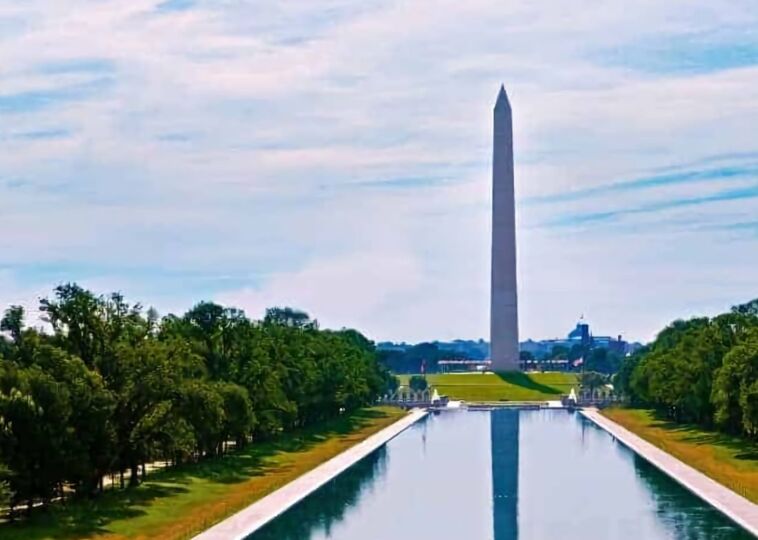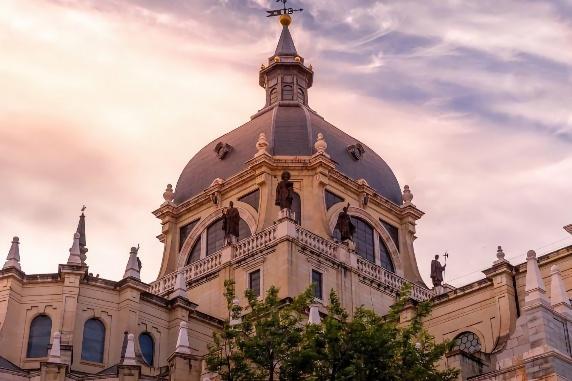Fall in Love with these Must-See USA Monuments

Contents [hide]
- Statue of Liberty: A Beacon of Freedom
- Mount Rushmore: America's Presidential Hall of Fame
- Lincoln Memorial: Honoring A Legend
- Golden Gate Bridge: the Engineering Marvel
- Washington Monument: the Tallest Tribute
- Jefferson Memorial: A Tribute to Innovation
- The Alamo: A Historic Fortress
- Independence Hall: Birthplace of America
Ready to embark on a journey through America’s most awe-inspiring landmarks? Buckle up as we explore a collection of must-see USA monuments that not only tell the story of our nation but also captivate the hearts of everyone who visits them.
From towering statues to monumental bridges, these USA landmarks offer more than just a visual feast; they provide a profound Each monument tells a story, and visiting them is a chance to connect with the essence of the United States. So pack your bags, hit the road, and get ready to fall in love with these must-see American treasures.
Statue of Liberty: A Beacon of Freedom

If there’s one monument that encapsulates the spirit of America, it’s the Statue of Liberty. Perched proudly on Liberty Island in New York Harbor, this towering icon isn’t just a stunning piece of architecture; it’s a powerful symbol of freedom and democracy that has captivated millions of visitors from across the globe.
At 305 feet tall, Lady Liberty isn’t just big; she’s monumental. Designed by French sculptor Frédéric Auguste Bartholdi and completed in 1886, the statue is a colossal gift from France to celebrate American independence and the enduring friendship between the two nations.
The impressive size and elegant design are awe-inspiring, making it a must-see for anyone visiting New York City. The Statue of Liberty holds a torch high above its head, representing enlightenment and the path to freedom. Each design element is steeped in meaning, making more than just a beautiful landmark; she symbolizes hope and liberty.
Mount Rushmore: America’s Presidential Hall of Fame

Mount Rushmore stands as an iconic testament to American history and artistry. Carved into the rugged granite face of the Black Hills in South Dakota, this colossal sculpture is more than just a remarkable feat of engineering; it’s a grand tribute to four of the nation’s most influential presidents. Mount Rushmore’s grandeur is impossible to ignore.
The sculpture features the towering faces of George Washington, Thomas Jefferson, Theodore Roosevelt, and Abraham Lincoln, each measuring about 60 feet from the chin to the top of the head. The sheer scale of the monument, combined with the intricate detail of the carvings, is nothing short of breathtaking.
Visiting Mount Rushmore is more than just seeing a monument; it’s a journey through American history. The site offers various viewing platforms, walking trails, and informative exhibits that provide deeper insights into the creation of the sculpture and the lives of the presidents it honors.
Lincoln Memorial: Honoring A Legend

This iconic monument, dedicated to the 16th President of the United States, Abraham Lincoln, offers much more than a glimpse into American history; it provides a powerful experience that engages the heart and mind. When you first approach the Lincoln Memorial, its sheer grandeur is breathtaking.
Designed by architect Henry Bacon, this neoclassical structure mirrors the Parthenon in Athens, symbolizing the enduring values of democracy and justice. Thirty-six columns flank the memorial, each representing a state in the Union at the time of Lincoln’s death, underscoring its role in preserving the United States as a unified nation.
At the heart of the memorial sits the majestic statue of Abraham Lincoln, sculpted by Daniel Chester French. Lincoln’s larger-than-life presence, with a gaze cast forward, embodies the strength and resolve that defined leadership during one of the most turbulent periods in American history. Many visitors are drawn to this spot to ponder Lincoln’s enduring legacy and the principles championed.
Golden Gate Bridge: the Engineering Marvel

When you think of San Francisco, chances are the Golden Gate Bridge immediately comes to mind. This iconic structure isn’t just a practical means of crossing the Golden Gate Strait; it’s a breathtaking feat of engineering and an architectural masterpiece.
Spanning 1.7 miles from San Francisco to Marin County, the Golden Gate Bridge was an audacious project when it was completed in 1937. At the time, it was the longest and tallest suspension bridge in the world. Its construction involved overcoming significant engineering challenges, including the notoriously solid tides and high winds of the Golden Gate Strait.
The bridge’s two towers rise 746 feet above the water, a testament to the skill and vision of its designers, Joseph Strauss, Charles Alton Ellis, and Leon Moisseiff. The Golden Gate Bridge’s design is as striking as its scale. The color enhances visibility in the often foggy weather of the Bay Area, making the bridge a bold presence against the mist.
Washington Monument: the Tallest Tribute

The Washington Monument commands attention from a distance with its stark, white silhouette against the sky. Its grandeur is not just in its height but in its symbolism. Erected to honor George Washington, the monument represents the unity and strength of the young nation that helped shape it.
Designed by architect Robert Mills, the monument’s design is inspired by ancient Egyptian obelisks used to commemorate leaders and significant events. The Washington Monument’s clean lines and minimalist design reflect a classical elegance, a nod to both Washington’s vision for a new republic and the architectural ideals of the time. It wasn’t until 1884 that the monument was completed.
The Washington Monument’s towering height makes it a focal point of the National Mall, offering panoramic city views from its observation deck. The experience is visually stunning and profoundly moving, providing a bird’s-eye view of the city that Washington once envisioned.
Jefferson Memorial: A Tribute to Innovation

Designed by architect John Russell Pope and inspired by classical Roman temples, the Jefferson Memorial’s neoclassical design exudes timeless elegance. Its striking dome, supported by 54 majestic columns, mirrors the grandeur of ancient Roman architecture, paying homage to the ideals of democracy and liberty that Jefferson championed.
The location of the Jefferson Memorial on the Tidal Basin offers a serene and contemplative environment. As you stroll around the basin, the Jefferson Memorial rising in the distance is breathtaking. The reflective pool in front of the memorial enhances its grandeur and provides a perfect spot for introspection.
Stepping inside the Jefferson Memorial, visitors are greeted by a larger-than-life statue of Jefferson himself, sculpted by Rudulph Evans. Standing 19 feet tall, this imposing figure captures Jefferson’s contemplative demeanor as he gazes over the Tidal Basin.
The Alamo: A Historic Fortress

When you think of iconic American landmarks, the Alamo in San Antonio, Texas, inevitably comes to mind. This historic site isn’t just a relic of the past; it’s a powerful symbol of courage, sacrifice, and resilience that continues to captivate visitors worldwide. So, what makes the Alamo such a compelling destination?
Let’s The Alamo, originally known as the Mission San Antonio de Padua, was founded as a Spanish mission in the early 18th century. Its thick stone walls and strategic location made it an ideal stronghold, but its role in the Texas Revolution would etch it into the annals of history.
In 1836, the Alamo became the stage for one of the most famous battles in American history. During the Texas Revolution, a small group of Texian and Tejano defenders held out against a much larger Mexican force led by General Antonio López de Santa Anna.
Independence Hall: Birthplace of America

Step into the heart of American history with a visit to Independence Hall in Philadelphia. If you’ve ever wondered where the seeds of American democracy were sown, this is where they took root. Independence Hall is no ordinary landmark. It’s where the Declaration of Independence was debated and signed in 1776 and where the U.S.
This UNESCO World Heritage site is often considered the cradle of American democracy. Walking through its halls, you’re not just visiting a building but stepping into a pivotal historical moment. The Old Assembly Room, where the Continental Congress met, still echoes the enthusiasm and determination of those early American leaders.
Independence Hall is best known for its role in two monumental events. On July 4, 1776, the Continental Congress adopted the Declaration of Independence within its walls, declaring the American colonies free from British rule—Constitution. This document remains the backbone of the American government. Architecturally, Independence Hall is a gem of colonial design.


